
How to help your dog lose weight and get fit

Dr Jessica May, FirstVet vet
17 January 2022 | 8 minutes read
It’s natural to want to treat your dog with love, affection, and attention. Sometimes, though, that love can spill over into giving them extra food and too many treats. Before you know it, you’ve noticed your pooch is looking rounder than usual, or the vet tells you they’re overweight.
A dog is classed as ‘overweight’ if they are 10-20% above their ideal weight. Anything heavier than this puts them in the obese category. But even a little bit of extra weight can affect their health. FirstVet vet Dr Jessica May is here to talk about obesity in dogs and how you can help your pup lose weight.
Table of Contents
- What’s my dog’s ideal weight?
> How can I tell my dog is overweight? - Signs and causes of obesity in dogs
> Why is it important to not let my dog become obese? - Ways to help your dog lose weight
> What to feed your overweight dog
> How much to feed your dog to lose weight
> Good exercises for dogs to lose weight
> Exercising overweight puppies - How to help an arthritic or elderly dog lose weight
- How long does it take for dogs to lose weight?
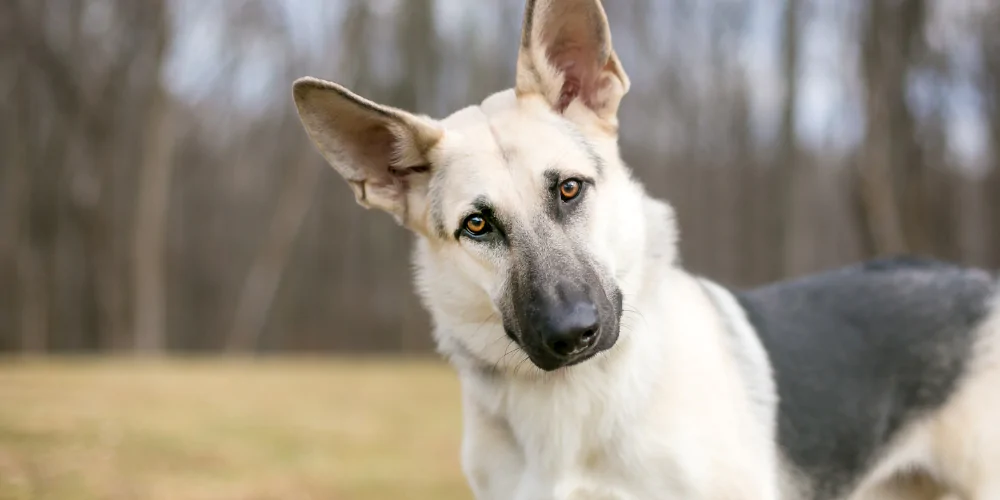
What’s my dog’s ideal weight?
First things first – how do you know the ideal weight for your pooch? This differs between breeds, but using a standardised ideal dog weight chart doesn’t take into account your dog’s individual build and size. This is why you want to look at your dog’s shape, known as ‘body condition scoring’. It is very easy and takes only a few seconds to check! If you’re not quite sure, ask your vet for guidance.
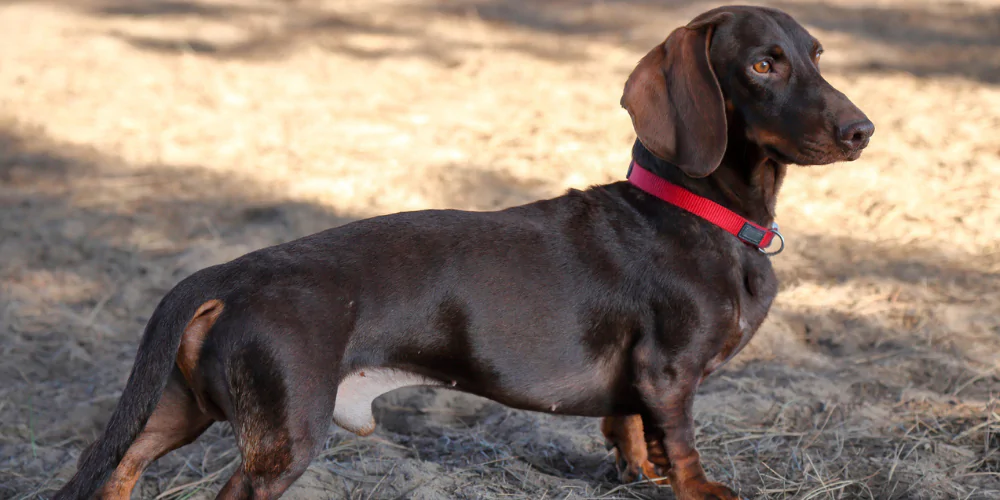
> How can I tell my dog is overweight?
To check your dog’s shape, look at:
- Their waist – it should have a neat, tucked in curve that’s visible from above.
- Their bones – ribs, spine, pelvic bones, and base of their tail should be easily felt with a light touch, and not have a build-up of fat.
- Their tummy – the belly should run upwards from the front legs to the back legs, when viewed from the side.
Do this at least once a month to keep an eye on your dog’s body condition, as their weight may fluctuate just like humans. Build this into your routine as a quick check, for example before walking or feeding.
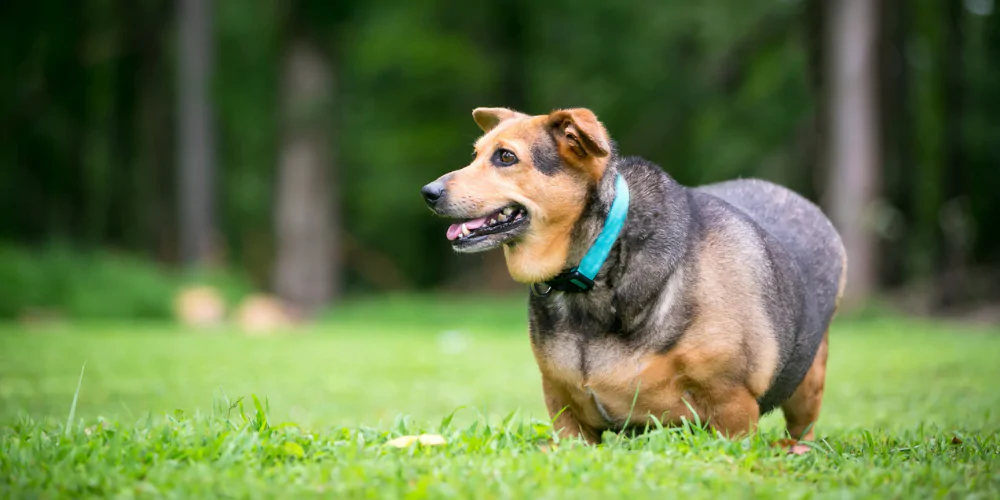
Signs and causes of obesity in dogs
Using the body conditioning process, you can tell if your dog is starting to get overweight if:
- Their waist is not prominent from above, or with a less obvious tuck.
- The base of their tail feels squashy and has fat deposits.
- Their stomach does not curve upwards behind the ribs, or has a pouch.
- Their ribs are not easy to feel with gentle fingertips.
- They are at least 10% over their ideal weight – their individual ideal weight can be confirmed by your vet.
The causes of obesity in dogs include:
- Their breed – some are more prone to getting overweight than others, such as Cocker Spaniels, Labrador Retrievers, Beagles, and Pugs.
- Giving them more food than the energy they burn off.
- Feeding them high fat foods, or human table scraps.
- Having a hormonal disease like Cushing’s disease or hypothyroidism.
- Seeing their metabolism slow due to age or being neutered.
- Having a condition that makes exercise difficult, such as arthritis.

> Why is it important to not let my dog become obese?
If your dog becomes obese, they could develop diseases such as pancreatitis, diabetes, cancer, and arthritis. Obesity worsens the pain and stiffness caused by arthritis, and may also cause their arthritis to progress faster. Your pup’s blood pressure could increase and their immune system weaken, as well as having a lower life expectancy.
Other risks include:
- Increased possibility of complications with anaesthesia.
- Mothers having difficulty feeding their pups.
- Struggles with hot weather and exercising.
- Back problems.
- Breathing problems.
- Incontinence.
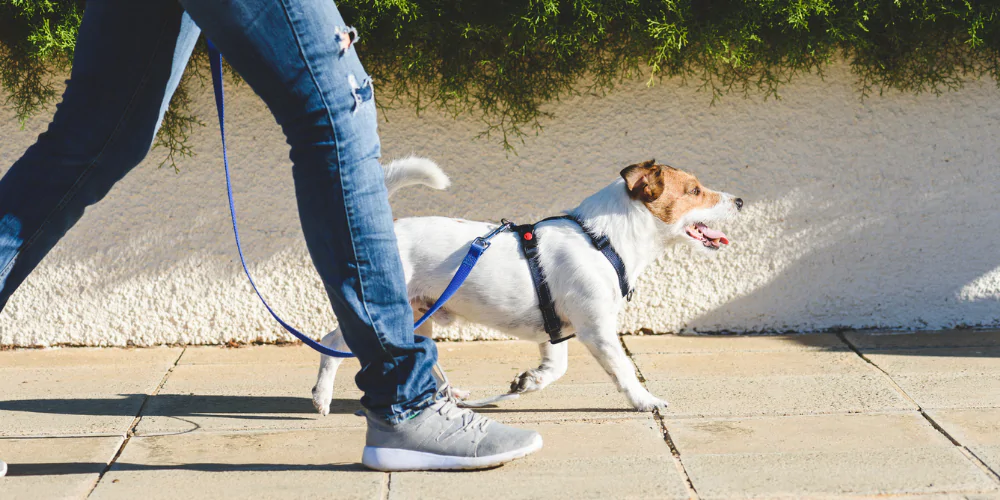
Ways to help your dog lose weight
Start by speaking with your vet to see if you need an appointment. They will check if the weight gain is due to a medical condition and needs treatment.
If not, they can help advise you on creating a unique weight loss plan for your pooch. It comes down to:
- Weighing out their daily food allowance. Use this to give treats and training aids. If you give additional treats, remember to take out the equivalent amount of food from their weighed daily allowance
- Reducing the amount of calories you feed them.
- Feeding them an age-appropriate diet. For example, large-breed dogs grow more slowly and reach skeletal maturity later than small dogs.
- Swapping what you feed your dog to a lower calorie option, or life-stage-appropriate amount.
- Changing when you feed them – bring the whole family in on the discussion so they know set meal times, and aren’t duplicating feeds by accident.
- Changing how you feed them – try using a scatter feeder or KONG or play hide and seek games to slow them down and also give them some mental stimulation.
- If safe to do so, give regular and consistent age-appropriate exercise.
If you have a Petsure policy, you can video chat with a FirstVet vet for free to talk about individual recommendations for your pup.
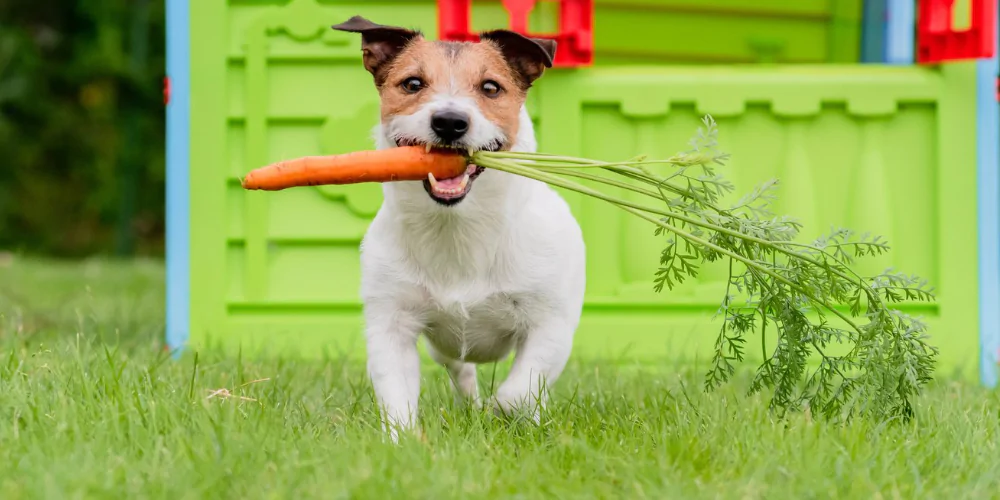
> What to feed your overweight dog
Your vet may put your dog on special diet food for a set amount of time (such as a couple of months), then check to see how they’re getting along with reaching their ideal weight. They can also recommend brands and food types that will help with weight loss.
Be mindful of snacks, choosing low-calorie options like raw, dog-safe vegetables (such as carrot) where possible. Stay away from high fat treats and foods. Your dog will always, unsurprisingly ask for more, but you are the one who knows what is best for them. Show them your love by taking them for a walk, playing games or having cuddles, rather than giving them more food.
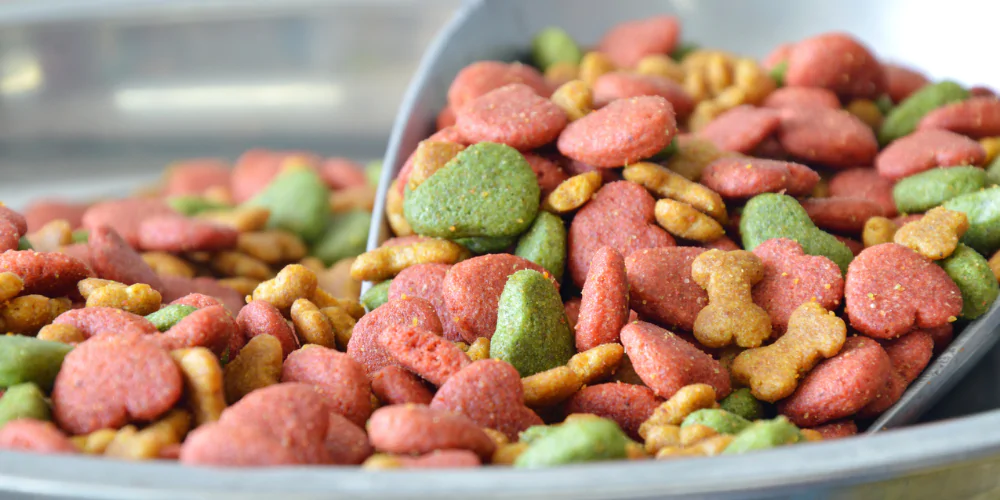
> How much to feed your dog to lose weight
If your pup is eating specific diet food, follow your vet’s guidance on how much to give them for each meal.
If not on a calorie-controlled diet, weigh out your dog’s food rather than eyeballing the quantities. Any treats should be taken out of their daily food allowance. Try swapping out treats for other forms of reward, such as playtime with their favourite toy.
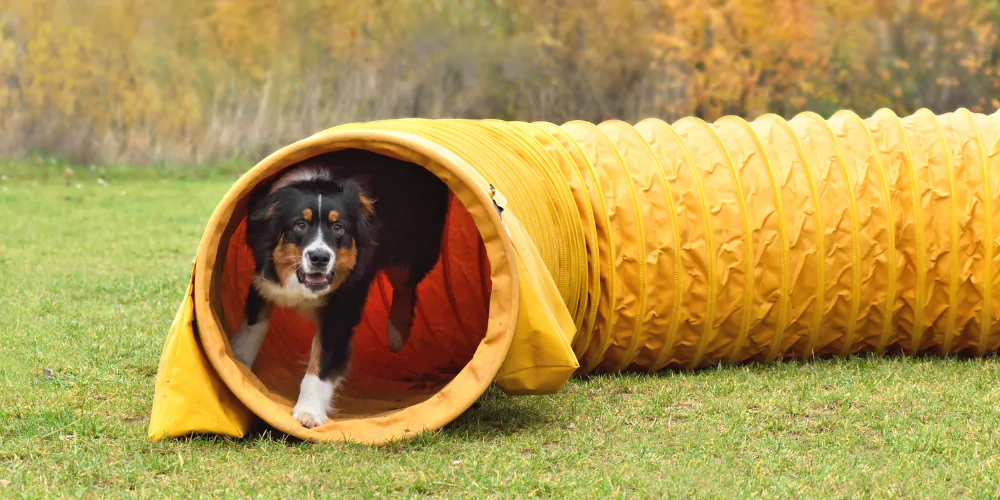
> Good exercises for dogs to lose weight
Increasing exercise is a good place to start. If your pup is a senior or has a health condition that limits their exercise, speak to your vet first to find a safe exercise option.
Begin with taking them out twice a day, slowly building up the length of each walk. After a while, you could try more adventurous exercises such as swimming, runs, and agility courses. The aim is to make exercise fun and active, so see what your dog enjoys doing most, and don’t push them past their limits.
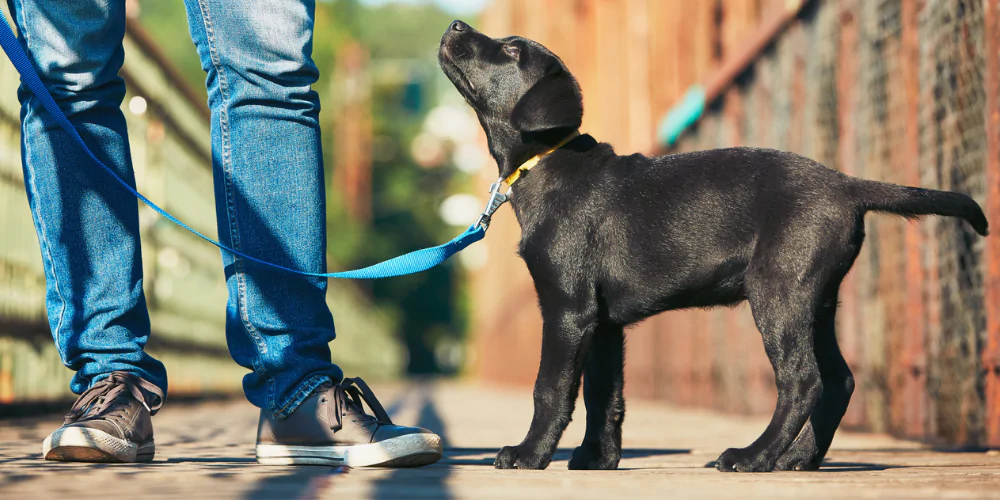
> Exercising overweight puppies
Avoid over-exercising puppies. A good rule of thumb is five minutes of exercise per month of age, up to twice a day, until your puppy is fully grown.
For example, a four-month old puppy should have a 20 minute walk, twice a day. We would also recommend trying to avoid stairs until your puppy is three months of age.
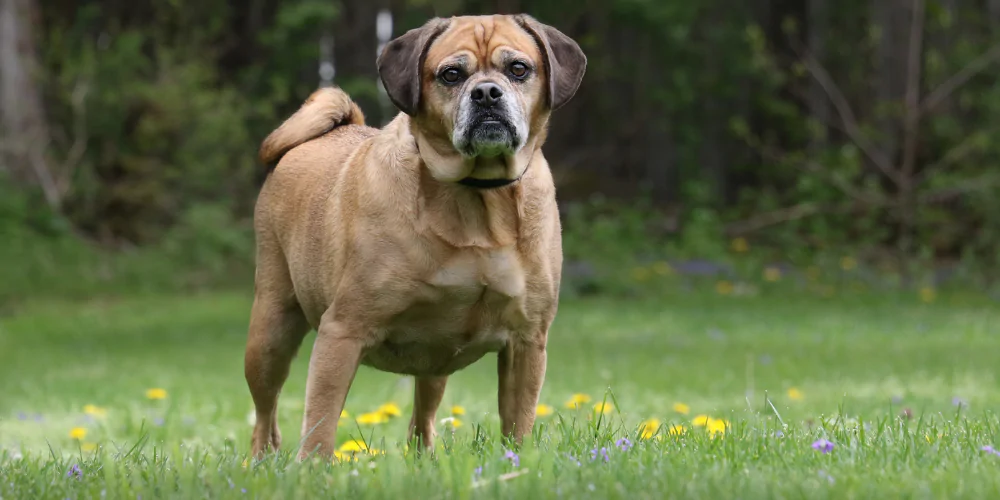
How to help an arthritic or elderly dog lose weight
Always speak to your vet first before trying to help your arthritic or elderly dog lose weight. Some of the recommendations they may make are:
- Reducing your dog’s food portions.
- Swapping out fats for ones that make your dog feel full, such as omega-3 fatty acids.
- Giving your pup more protein and less carbohydrates.
- Encouraging regular low impact exercise like swimming and walking.
- Being consistent with exercise to keep up fitness and range of motion in joints.
- Avoid going for a one-off very long walk followed by several days with short walks.
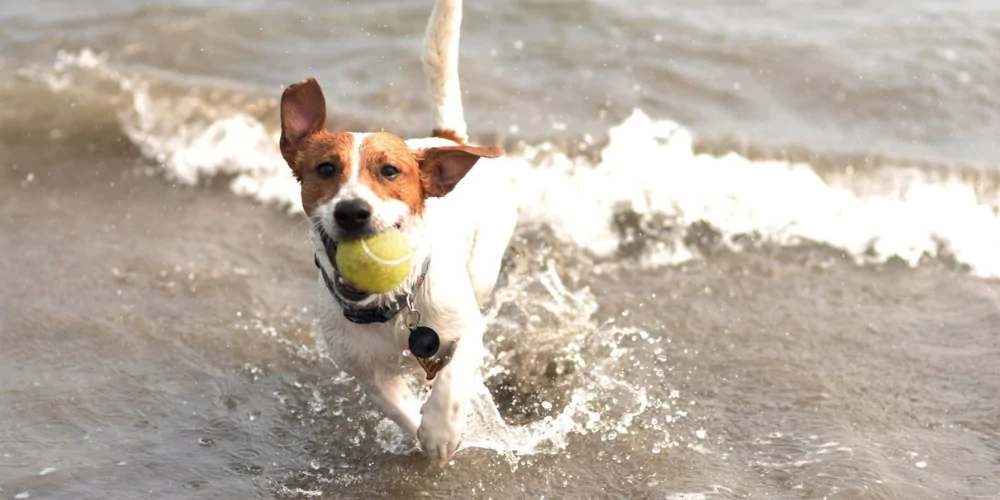
How long does it take for dogs to lose weight?
The time it takes for dogs to lose weight differs between each individual pooch. A safe weight loss is one percent per week.
It’s important not to rush weight loss, but rather stick to vet recommendations with food types and amounts, as well as keeping your pup active. Use the body conditioning guide to measure your dog’s shape, and you’ll hopefully soon start seeing a difference.
Help protect your canine from unexpected vet bills with flexible dog insurance from Petsure.


